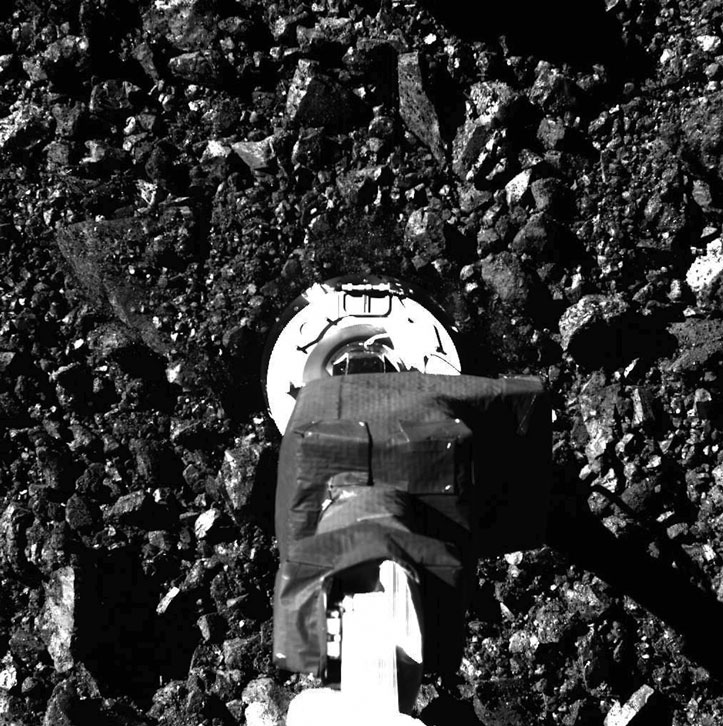
This Article From Issue
September-October 2022
Volume 110, Number 5
Page 272
In this roundup, managing editor Stacey Lutkoski summarizes notable recent developments in scientific research, selected from reports compiled in the free electronic newsletter Sigma Xi SmartBrief.
Biodegradable Soundproofing
Sustainable building requires rethinking all aspects of construction, including the materials used to buffer noise. Engineers at the Indian Institute of Technology Kanpur may have found an unlikely replacement for the traditional synthetic acoustic foam: seaweed. The team used agar, a gelatinous substance derived from some species of red seaweed, to create a film that absorbed sounds at a level comparable to the petroleum-derived synthetic materials commonly used for sound dampening. The agar was mixed with glycerol and cellulose to create porous and nonporous films of various thicknesses—agar and glycerol both dampen sound, and cellulose provides structure. Thicker, porous films with 5 percent each of agar and glycerol absorbed sound the best. These biodegradable soundproofing films could be used to replace plastic foams in buildings, recording studios, and airplanes. For the material to become commercially viable, however, the team will need to develop a flame-retardant version.
Kumar, S., K. Jahan, A. Verma, M. Agarwal, and C. Chandraprakash. Agar-based composite films as effective biodegradable sound absorbers. ACS Sustainable Chemistry & Engineering 10:8242–8253. (June 23).
Bennu’s Surface Lacks Cohesion
Asteroids are often thought of as space rocks, but Bennu’s composition seems more akin to a ball pit. In October 2020, after orbiting the asteroid for two years, NASA’s OSIRIS-REx spacecraft conducted a touch-and-go (TAG) landing on Bennu, in which an arm reached down and briefly contacted the surface to collect a sample. The mission’s principal investigator, planetary scientist Dante Lauretta of the University of Arizona, knew from previous years of observation that Bennu is a low-density, “rubble pile” asteroid rather than solid rock, but the lack of cohesion still came as a surprise. (See the blog post “Asteroid Bennu Up Close,” and the interview "First Person: Dante Lauretta.") Rather than a gentle touchdown, the TAG resulted in a plume of debris as the arm sunk into the asteroid’s spongy surface. In April 2021, OSIRIS-REx conducted a flyby of the TAG site and found that the landing had created a 9-meter-long elliptical crater. Because the probe sank into the asteroid and displaced surface debris, the TAG sample includes deeper material from Bennu’s near subsurface. These buried rocks are darker and redder than those near the surface. Asteroids contain material from the earliest stages of planetary formation, including organic molecules. When OSIRIS-REx delivers the sample to Earth in 2023, researchers will be able to examine its composition and learn more about Bennu and about the origins of the Solar System.

NASA / Goddard / University of Arizona
Lauretta, D. S., et al. Spacecraft sample collection and subsurface excavation of asteroid (101955) Bennu. Science 337:285–291. (July 7).
Walsh, K. J., et al. Near-zero cohesion and loose packing of Bennu’s near subsurface revealed by spacecraft contact. Science Advances doi:10.1126/sciadv.abm6229 (July 7).
Promising Implant Cools Pain
A microfluidic device might be able to provide targeted relief to postoperative patients and others experiencing intense pain. A team of biomedical engineers led by Jonathan T. Reeder of Northwestern University has developed a tiny implant that encircles a specified peripheral nerve like a cuff. The device acts like a miniature refrigerator, circulating coolant from an external pump into the cuff and numbing the nerve; when the pain treatment is complete, the pump is disconnected and the implant safely dissolves and is absorbed into the body. Existing cooling implants are bulky, imprecise, and need to be surgically removed when treatment is complete. These microfluidic implants are minimally invasive, target specific nerves, and do not need to be extracted. The coolant works through evaporation—similar to how sweat cools the body—and the external pump replenishes the liquid. The device is currently in animal trials, and the results indicate that it is a promising alternative to opioid pain management.
Reeder, J. T., et al. Soft, bioresorbable coolers for reversible conduction block of peripheral nerves. Science 377:109–115 (June 30).
Dogs Link Scent and Sight
Canines have a direct connection between the smell and vision regions of their brains that has not been observed in any other animal. Dogs are known for their finely tuned sense of smell, but little is known about the structure of their olfactory system. A study led by Philippa J. Johnson of Cornell University’s College of Veterinary Medicine sought to discover more about the mechanisms behind their sensitive noses. The study included 20 mixed-breed dogs and three beagles, both male and female, ranging from 2 to 11 years old. Using diffusion tensor imaging, an MRI technique that can model the brain’s white matter, they identified a direct connection between the olfactory bulb and the occipital lobe. This olfactory–occipital tract has not been identified in any other species. The team confirmed their findings through the dissection of two canine brains (unrelated to the 23 test subjects). Previous studies theorized that there might be a link between dogs’ senses of smell and sight, but this study marks the first evidence of that connection. These findings provide insight into dogs’ cognitive functions and their superior noses.

Wikimedia Commons
Andrews, E. F., R. Pascalau, A. Horowitz, G. M. Lawrence, and P. J. Johnson. Extensive connections of the canine olfactory pathway revealed by tractography and dissection. Journal of Neuroscience doi:10.1523/jneurosci.2355-21.2022 (July 11).

American Scientist Comments and Discussion
To discuss our articles or comment on them, please share them and tag American Scientist on social media platforms. Here are links to our profiles on Twitter, Facebook, and LinkedIn.
If we re-share your post, we will moderate comments/discussion following our comments policy.